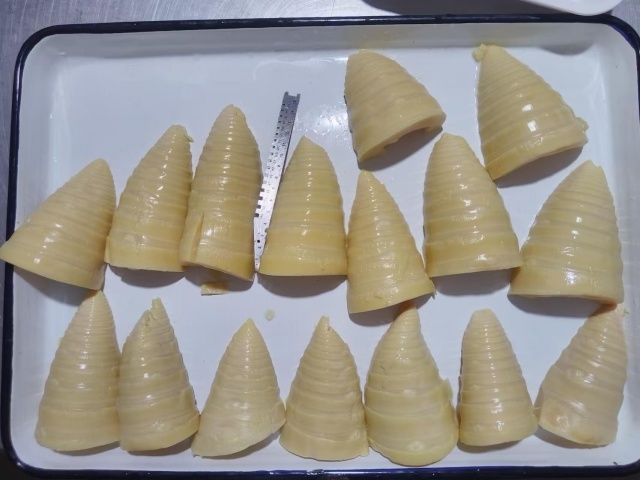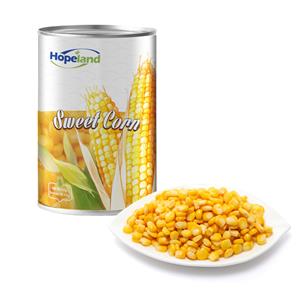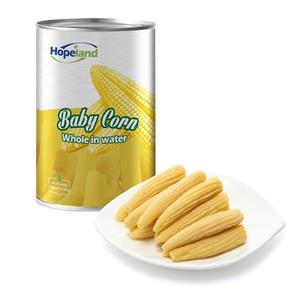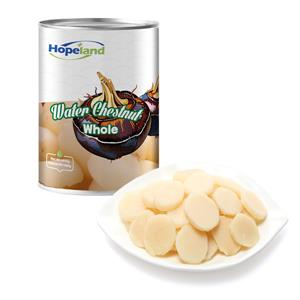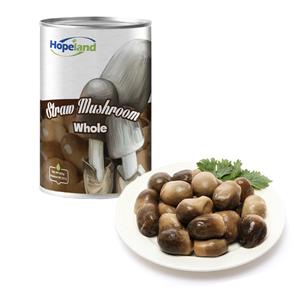The Production Journey of Bamboo Shoot Halves: From Forest to Table
Bamboo shoots, the tender, young sprouts of the bamboo plant, have been cherished in Asian cuisine for centuries for their delicate texture and mild, earthy flavor. Among the different types of bamboo shoots available in the market, bamboo shoot halves stand out as a convenient and versatile product, commonly found in cans and jars around the world. But how do these products make their way from dense bamboo forests to your kitchen shelf? This blog takes you on a fascinating journey through the production of bamboo shoot halves, revealing the meticulous steps and care taken to ensure their quality, safety, and culinary appeal.
Understanding Bamboo Shoots: Nature’s Gift
Before exploring the production process, it’s important to understand what bamboo shoots are and why they’re so valued. Bamboo shoots are the edible young culms of certain bamboo species, harvested before they mature into hard, woody stems. Rich in fiber, low in calories, and packed with essential nutrients like potassium and vitamins, bamboo shoots are a staple in soups, stir-fries, curries, and salads across many cultures.
In their natural state, bamboo shoots are covered in tough husks and contain a bitter compound called cyanogenic glycosides, which needs to be removed before consumption. The process of preparing bamboo shoots for commercial sale, especially as bamboo shoot halves, is designed to retain their tenderness while eliminating any undesirable properties.
Step 1: Harvesting at the Right Moment
The journey of bamboo shoot halves begins in bamboo groves, typically located in mountainous or subtropical regions. The timing of harvest is critical. Bamboo shoots are usually harvested in spring or early summer when they’re still young and tender. Left unharvested, they grow rapidly—sometimes up to a meter a day—becoming too fibrous for culinary use.
Experienced farmers look for shoots that are about 15–30 cm long and still beneath or just emerging from the soil. They carefully dig around the base to avoid damaging the delicate shoots. Once harvested, they are swiftly transported to nearby processing facilities to preserve their freshness and prevent bitterness from developing.
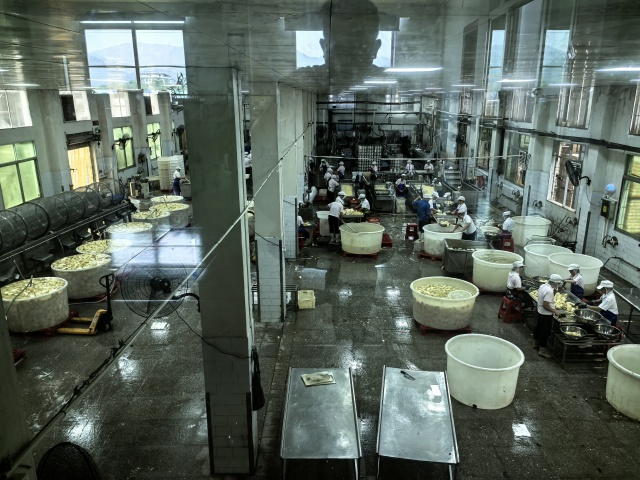
Step 2: Sorting and Trimming for Quality
At the processing plant, the freshly harvested bamboo shoots undergo a stringent sorting process. Only shoots of the desired size, color, and shape are selected for further processing. Those with blemishes, tough fibers, or excessive bitterness are discarded or sent for use in lower-grade products.
The selected bamboo shoots are then trimmed. Workers remove the outer tough husks to reveal the pale, tender core. This inner portion is what consumers recognize as edible bamboo shoot. The shoots are washed thoroughly to remove soil and debris.
For bamboo shoot halves, the trimmed shoots are then cut lengthwise. This not only makes them convenient for cooking but also allows even heat penetration during processing, ensuring the final product’s quality and safety.
Step 3: Pre-Cooking and Bitter Compound Removal
One of the essential steps in bamboo shoot processing is the removal of natural bitterness caused by cyanogenic glycosides. To neutralize these compounds, the bamboo shoots are boiled or steamed in large vats. This process also softens their texture, preparing them for final packaging.
Typically, the shoots are blanched in boiling water for 20–30 minutes. The water may be changed once or twice to ensure thorough removal of bitterness. After boiling, they are quickly cooled in cold water to halt cooking and maintain their delicate structure.
Step 4: Grading and Size Standardization
Consistency is crucial in commercial food production. Once cooled, the bamboo shoot halves are graded according to size and appearance. Uniformity in size ensures that each can or jar contains pieces that look and cook similarly, which appeals to both home cooks and chefs.
This step often involves manual inspection alongside mechanical sizing equipment. High-grade bamboo shoot halves are smooth, light-colored, and free from any cracks or tough fibers.
Step 5: Canning or Bottling – Preserving Freshness
With the bamboo shoot halves prepared and graded, it’s time for packaging. Most bamboo shoot halves are packed in cans or glass jars for global distribution. The process involves several key steps:
Filling – Bamboo shoot halves are packed into containers with a brine solution, usually consisting of water, salt, and sometimes a mild preservative like citric acid to maintain color and freshness.
Sealing – The containers are sealed using vacuum technology to prevent air from entering, which could cause spoilage.
Sterilization – The sealed cans or jars undergo sterilization in large autoclaves at high temperatures. This step ensures that any remaining bacteria are destroyed, and the product becomes shelf-stable for months or even years.
Sterilization is carefully controlled to preserve the natural flavor and texture of the bamboo shoots while guaranteeing food safety.
Step 6: Labeling, Storage, and Distribution
Once cooled, the canned or jarred bamboo shoot halves are labeled and coded for traceability. Labels typically include nutritional information, country of origin, production date, and expiration date.
The finished products are then packed into cartons and stored in climate-controlled warehouses until they are shipped to markets worldwide. Thanks to this careful process, consumers can enjoy the fresh taste of bamboo shoots year-round, regardless of the season.
Why Choose Canned Bamboo Shoot Halves?
Canned bamboo shoot halves offer several advantages:
Convenience – Pre-cut and ready to use, they save time in meal preparation.
Long Shelf Life – With proper storage, they remain fresh for up to two years.
Consistency – Each can or jar provides uniform quality and size.
Versatility – Perfect for stir-fries, soups, curries, and even salads.
Unlike fresh bamboo shoots, which require immediate use and careful preparation, canned bamboo shoots are pre-cooked and safe to consume after a simple rinse.
Sustainability in Bamboo Shoot Production
Modern bamboo shoot production emphasizes sustainability. Bamboo itself is a highly renewable resource, capable of regenerating quickly after harvesting. Many producers also implement environmentally friendly practices, such as:
Reducing water usage in processing plants.
Recycling waste materials like husks for animal feed or compost.
Using energy-efficient sterilization methods.
Consumers can support these efforts by choosing products from companies that prioritize sustainable sourcing and processing.
Culinary Inspiration: Cooking with Bamboo Shoot Halves
Bamboo shoot halves are incredibly versatile in the kitchen. Their subtle flavor pairs well with bold spices and rich sauces. Here are a few popular ways to use them:
Stir-Fried Bamboo Shoots – Sauté with garlic, chili, and soy sauce for a quick side dish.
Thai Green Curry – Add to coconut milk-based curries with chicken or tofu.
Hot and Sour Soup – Bamboo shoots add texture and flavor to this classic dish.
Salads – Thinly slice and toss with sesame dressing for a refreshing appetizer.
The possibilities are endless, making bamboo shoot halves a pantry essential for adventurous cooks.
Conclusion: A Taste of Tradition and Modern Innovation
The production of bamboo shoot halves is a perfect blend of traditional knowledge and modern food technology. From careful harvesting in pristine bamboo forests to meticulous processing and preservation, every step ensures that these tender shoots reach your table in prime condition.
Whether you’re an experienced chef or a home cook exploring Asian flavors, bamboo shoot halves provide an authentic taste of nature’s bounty, ready to enhance your favorite recipes.

